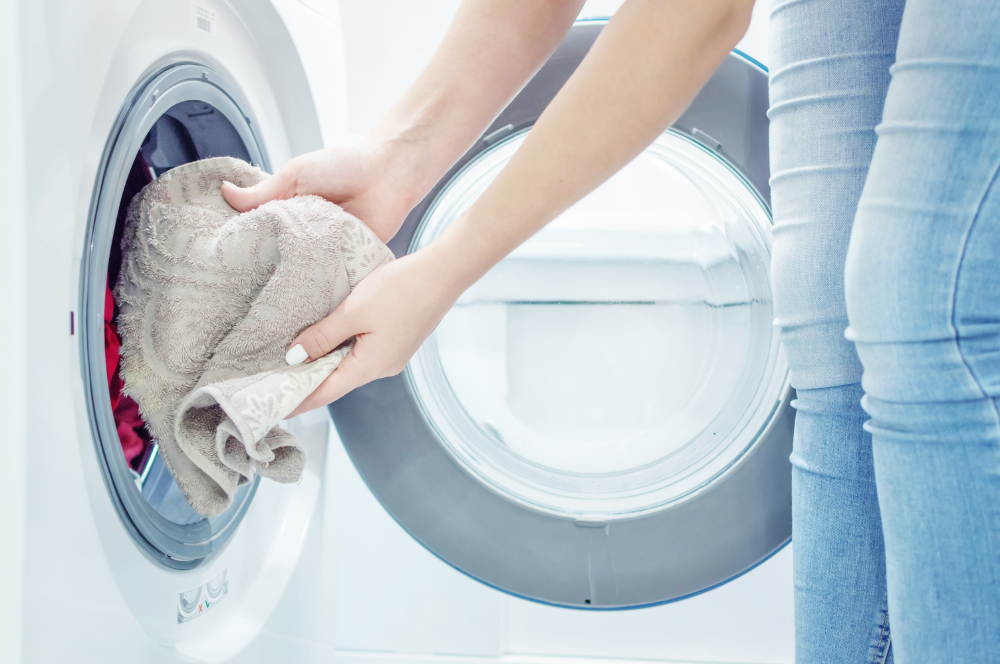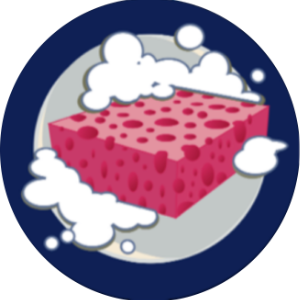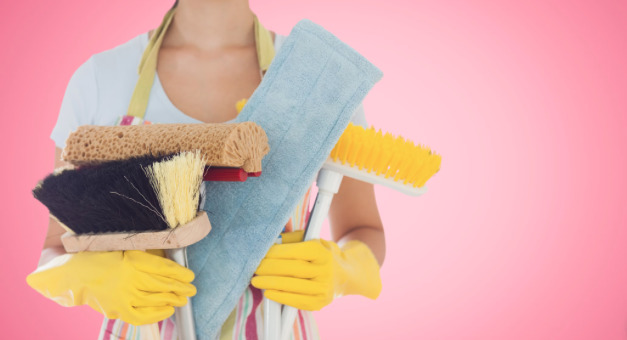Laundry, a chore that is a constant in our lives, doesn’t have to be a daunting task. With the right techniques and a bit of organization, you can transform the laundry process from a mundane routine to a smooth, efficient operation. In this comprehensive guide, we will explore the best way to do laundry, covering everything from sorting and stain removal to washing and drying, ensuring your clothes come out fresh and clean every time.
Sorting: The Foundation of Efficient Laundry
Sorting your laundry is the first step toward successful cleaning. Here’s how to do it effectively:
Separate by Color: Always sort laundry by color to prevent colors from bleeding onto each other. Whites, lights, and darks should be washed separately to maintain their vibrancy.
Sort by Fabric Type: Delicate fabrics like silk and lace require gentle washing, so separate them from sturdier materials like denim or cotton.
Check Pockets: Before tossing clothes into the washing machine, check all pockets for items like pens, coins, or tissues. These can cause damage to your clothes and your washing machine.
Pre-Treating Stains: A Strategic Approach
Stains are a common laundry challenge, but with the right approach, they can be effectively dealt with:
Act Quickly: Tackle stains as soon as possible. The longer a stain sits, the harder it is to remove.
Identify the Stain: Different stains require different treatments. For example, grease stains can be treated with dish soap, while protein-based stains like blood or egg should be soaked in cold water.
Use the Right Products: Invest in a good stain remover, and always follow the instructions on the label. Alternatively, natural remedies like baking soda, vinegar, or lemon juice can be effective for certain stains.
Washing: Choosing the Right Cycle and Detergent
The washing process involves selecting the appropriate washing machine settings and detergent for your specific load:
Choose the Right Water Temperature: Cold water is suitable for most colors and delicate fabrics, while hot water is ideal for whites and heavily soiled items. Warm water is a good compromise for general washing.
Select the Correct Cycle: Most washing machines offer various cycles such as gentle, normal, and heavy-duty. Choose the one that matches your load’s needs to conserve energy and prolong the life of your clothes.
Use the Right Detergent: Consider using high-efficiency detergents for front-loading machines. For top-loading machines, both powder and liquid detergents work well. Measure the detergent carefully to avoid residue buildup.
Drying: Maximizing Efficiency and Fabric Care
Drying is a critical step that can impact the longevity and quality of your clothing:
Air Dry when Possible: Whenever suitable, air dry your clothes to conserve energy and prevent wear and tear. Delicate fabrics and items with specific prints or embellishments often fare better when air-dried.
Sort Before Drying: Just as with washing, sort your laundry before drying. Heavy items like towels and jeans should be dried separately from lighter materials to ensure even drying.
Avoid Overloading: Overloading the dryer not only results in longer drying times but also causes wrinkles and reduces efficiency. Clothes need space to tumble freely for effective drying.
Folding and Storage: The Final Touch
Proper folding and storage are crucial for keeping your clothes looking neat and organized:
Fold Immediately: Remove clothes from the dryer promptly to avoid wrinkles. Fold them immediately or hang items that wrinkle easily.
Organize by Category: Store clothes by type (shirts, pants, dresses) and occasion (work, casual, formal) to make it easy to find what you need.
Use Appropriate Hangers: Invest in quality hangers that provide adequate support for various types of garments. Use padded hangers for delicate items and sturdy ones for coats and jackets.

Laundry Stains
Unraveling the Secrets of Stain Removal
Laundry stains, those seemingly inevitable blemishes on our favorite garments, have a mystique of their own. They appear out of nowhere, testing our patience and resolve. However, fear not, for behind every stain lies a solution, a methodical approach that can salvage our cherished clothes. In this article, we delve into the art and science of stain removal, exploring proven techniques tailored for specific stains that haunt our laundry nightmares.
Each stain, from the notorious red wine blotches to the sneaky ink marks, presents a unique challenge. To combat this, we have compiled a comprehensive guide, outlining precise methods for each type of stain. From the swift action required for fresh spills to the strategic treatments for set-in stains, we unveil the secrets to banishing these marks effectively.
Armed with knowledge about the right techniques and common household items, you can now confront the stains that once seemed insurmountable. This guide not only offers practical solutions but also empowers you to approach laundry stains with confidence. So, let’s embark on this stain-removal journey, unraveling the mysteries one blotch at a time, and rediscover the joy of pristine, stain-free clothes.
Below is a list of common laundry stains and methods to remove them, each explained in a paragraph.
Blood Stains:
Blood stains are best treated with cold water. Immediately rinse the stained area under cold running water, gently rubbing the fabric together to loosen the stain. If the stain persists, soak the garment in cold water with a small amount of salt or mild detergent. For stubborn stains, consider using a mixture of cold water and enzyme-based stain remover. Avoid hot water, as it can set the stain.
Red Wine Stains:
To remove red wine stains, blot the area immediately with a clean cloth or paper towel to absorb as much of the wine as possible. Sprinkle salt or baking soda on the stain to absorb the remaining liquid. Then, soak the fabric in cold water and dishwashing soap. Alternatively, pour boiling water through the fabric from a height to help force the stain out. Launder the garment as usual afterward.
Grease or Oil Stains:
For grease or oil stains, place a paper towel on both sides of the fabric to absorb excess grease. Sprinkle talcum powder or cornstarch on the stain and let it sit for 15-20 minutes to absorb more oil. Afterward, brush off the powder and apply dishwashing detergent directly to the stain, gently rubbing the fabric together. Wash the garment in the hottest water safe for the fabric.
Ink Stains:
To remove ink stains, place the stained area on paper towels and apply rubbing alcohol with a clean cloth or cotton ball. Blot the fabric, changing the paper towels frequently until no more ink transfers. Rinse the area thoroughly with cold water. If the stain persists, mix equal parts of water, vinegar, and dishwashing soap, apply the solution, and wash the garment afterward.
Coffee Stains:
Act quickly for coffee stains. Blot the stain with a clean cloth to remove excess liquid. Mix one tablespoon of dishwashing detergent, one tablespoon of white vinegar, and one cup of water. Apply the solution to the stain and let it sit for a few minutes. Blot the area with a clean cloth until the stain lifts. Wash the garment as usual afterward.
Grass Stains:
Grass stains can be tough, but you can tackle them by applying a pre-wash stain remover or liquid laundry detergent directly to the stain. Gently rub the fabric together to work in the detergent. Let it sit for 10-15 minutes, then launder the garment in the warmest water safe for the fabric. Check the stain before drying; if it’s still visible, repeat the process.
Tomato Sauce Stains:
For tomato sauce stains, scrape off excess sauce with a spoon or dull knife. Rinse the fabric under cold water from the back of the stain to force the sauce out. Apply liquid laundry detergent directly to the stain and let it sit for 5-10 minutes. Gently rub the fabric together, then wash the garment in warm water.
Sweat Stains:
To remove sweat stains, make a paste using baking soda and water. Apply the paste to the stained area and gently rub the fabric together. Let it sit for about 30 minutes before washing the garment in the hottest water safe for the fabric. Avoid using bleach, as it can worsen sweat stains on certain fabrics.
By employing these methods tailored to specific stains, you can effectively remove various types of stains from your clothes, ensuring they stay fresh and clean. Always check the garment’s care label and perform a spot test in an inconspicuous area before applying any cleaning solution to avoid damaging the fabric.
In Conclusion
Mastering the art of laundry is about more than just cleanliness; it’s about efficiency, care, and attention to detail. By following the steps outlined in this guide, you can streamline your laundry routine, tackle stains effectively, conserve energy, and extend the life of your clothes. Embrace these techniques, turn laundry day into a well-organized process, and enjoy the satisfaction of fresh, clean clothes every time. With the right approach, laundry can become a manageable and even satisfying part of your household routine.




